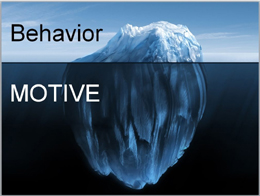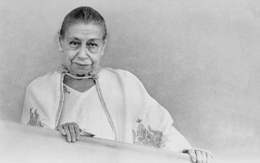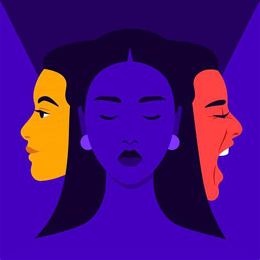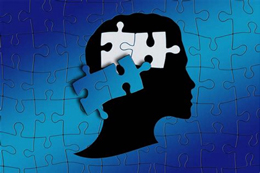Bipolar Disorder
An Integral Psychology Perspective on Bipolar Disorder
Abstract
This paper is an attempt to use the lens of the Integral Psychology of Sri Aurobindo and the Mother to gain new insights into the nature of the bipolar disorder, a common mental health issue that affects nearly 1-2% of the global population. Bipolar disorder can be seen as a disequilibrium of the vital being, causing an inflated or deflated self-image, bringing with it extreme mood-swings between hyperactivity and depression. While an inflated ego of the central vital contributes to hyperactivity, the depressive periods show the presence of a deflated emotional being, which is more like a wounded child even when chronologically the person is an adult. These parts of the being remain in the realm of their shadow and emerge in the context of progress the individual is attempting in life. My proposition here is that the universal dynamics of the shadow and its opposition to progress, both at an individual and collective level, is the deep struggle that triggers repressed parts of the vital being to emerge to the surface and take over the surface personality of the people, thus causing the bipolar disorder.
Bipolar disorder, also known as manic-depressive illness, is characterised by episodes of extreme mood-swings that range from emotional highs (mania or hypomania) and lows (depression). During manic or hypomanic episodes, a person with bipolar disorder may experience excessive energy and activity, euphoria, irritability, racing thoughts, engage in risky impulsive behaviour, and difficulty sleeping. Depressive episodes are characterised by feelings of sadness, hopelessness, loss of interest in activities, changes in appetite and sleep patterns, difficulty concentrating, and thoughts of suicide.
Disequilibrium of the Being
From an Integral Psychology perspective:
“An illness is simply, always, in every case, even when the doctors say that there are microbes — in every case, a disequilibrium in the being: a disequilibrium among the various functions, disequilibrium among the forces (1).”
Since there are many parts and planes to our being, we need to identify the parts of the being where disequilibrium has occurred. In the case of bipolar disorder, the most visible symptom is a disequilibrium of the vital being as well as the mental being. Modern Western medical science is tracing disequilibrium at the physical and chemical level in the body all the way to the genes. However, from an integral perspective, the physical and chemical aspects are seen as the mechanics of expression rather than the source of the problem. While modern psychiatric approaches try to resolve the disorder by restoring the chemical balance of the body through medication, it is more like suppressing social unrest with armed forces. The psychological roots and the personalities behind the unrest remain untransformed and they have just retreated into their hideouts, only to return when they get an opportunity. While such medication can give temporary relief, a deeper healing process is required to restore equilibrium at a fundamental level.
The loss of equilibrium at the mental level happens when there is a temporary clouding and loss of rational intelligence. However, the source of this clouding is not in the mind itself but in the vital being. When bipolar disorder manifests, the vital being swings between two extremes of high and low, overriding the otherwise normal surface personality of the mental being. During these episodes, we can observe a heightened emotional intensity and with it the vital being grips the mental being and swings it towards an elation of depression. In the process, mental intelligence becomes subservient to emotional swings and supplies all the narratives to support it.
The cognitive process of the mental being and its meaning-making process gets highly coloured and distorted by the emotional being. During that period, trying to engage with the person through the agency of reason doesn’t work as the power of reason is clouded or submerged by the upsurge of emotions. We may safely assume that within the individual, it is somewhere in the domain of the vital being the seeds of disequilibrium are located, especially the subconscient regions of the vital being. An analytical process may unearth childhood traumas buried in the subconscient as plausible causes. However at a certain stage of life what awakens these subconcient parts of being and brings them forth to overtake the surface personality requires some rationale.
The Fundamental Cause of Disequilibrium
There is a very insightful perspective given by the Mother that gives a very broad view of the forces at work.
“Each time the consciousness orients itself in one direction to attain some result, everything that was in existence (not just one’s personal existence, but this sort of collectivity of existences that each being represents), everything that is contrary to this effort immediately presents itself in its crudest light (2).”
When there is a conscious effort to progress in one direction, there is an automatic corresponding reaction to it. According to Sri Aurobindo:
“The law of action and reaction, valid even in physical Science, is in human action, which must always depend largely on psychological forces, a more constant and pervading truth. That in life to every pressure of active forces there is a tendency of reaction of opposite or variative forces which may not immediately operate but must eventually come into the field or which may not act with an equal and entirely compensating force, but must act with some force of compensation, may be taken as well established (3).”
From this action-reaction perspective, the effort to progress and a corresponding counter-force that comes into play, we get a glimpse into the general cause of disequilibrium which can be at the root of various illnesses. We can also say it applies not only to individual psychology but also to collective psychology.
This view gives us a better insight into the nature of the inner battle that can emerge in an individual or the collective and the reason behind it. Integral Psychology has an evolutionary perspective and progress on the path of inner evolution inevitably has to deal with the dual forces at work. This becomes even more prominent, “… if it so happens that you have decided to progress and if you enter the path of yoga, then a new factor intervenes. As soon as you want to progress, you immediately meet the resistance of everything that does not want to progress both in you and around you (4).”
So from an evolutionary perspective of Integral Psychology, we can say that there is an element of progress the individual is making and the disorder is only a counter force that has shown up, to be dealt with and transformed. This progress need not be yogic in nature, even in the general life of a society. When an individual tries to bring in something new, usually, they are met with resistance from the established social order and customs, as the new element disturbs the existing harmony. This is easy to understand, but when a similar process unfolds within an individual it is not easy to recognise and understand.
Integral Psychology looks at an individual as having many parts of the being and each has its own interests and demands. In the process of individualisation, the multiple wills within an individual need to collaborate and get unified. But often this collaboration doesn’t happen and there can be an inner revolt, especially from parts of the being that are operating below the awareness of the surface personality.
The Polarity of Light and the Shadow Within
In the context of vital education, the Mother describes:
“… everyone possesses in a large measure, and the exceptional individual in an increasing degree of precision, two opposite tendencies of character, in almost equal proportions, which are like the light and the shadow of the same thing. Thus someone who has the capacity of being exceptionally generous will suddenly find an obstinate avarice rising up in his nature, the courageous man will be a coward in some part of his being and the good man will suddenly have wicked impulses. In this way life seems to endow everyone not only with the possibility of expressing an ideal, but also with contrary elements representing in a concrete manner the battle he has to wage and the victory he has to win for the realisation to become possible (5).”
In general we can say that this process is at once individual and collective. In a society, the change makers are often seen as rebels who upset the existing social order and in the same way within an individual, when a part opens to evolutionary progress that disturbs the established order, it is met with resistance. This resistance arises from the unconscious parts of the vital and physical being, we may say the subconscient in general. In a society, on a large scale, a similar process translates as a conflict between modernity and tradition, or progressives and conservatives, or as a conflict between science and religion.
Integral Psychology looks at this internal conflict within an individual or society as a general process of Nature’s evolution that is unfolding simultaneously. In this progress, there are three factors that we need to consider, the conscious part of the being, and the normal outer stable surface personality, which are operating under three influences:
The influence from below — the sub-rational or infra-rational parts of the being, the vital and physical layers, the subconscient, that can pull down or upsurge and take over the rational.
The pull from behind — the subliminal parts of the being, the inner mental, inner vital and inner physical parts, that are far superior and powerful than the surface personality and influence from behind
The pull from above — the supra-rational, the spiritual ranges of consciousness above, is drawing the evolutionary movement upward towards higher possibilities that are potentially present within the subliminal.
These three forces are simultaneously operating within the individual and the collective. Bipolar disorder manifests when the forces from below take over the surface personality. This upsurge may have some outer triggers as the external cause and may use genetic or other biochemical mechanics of the body as physical means. However, when we look at it from an evolutionary perspective and posit that the individual was making a great effort to progress, then we have to bring in the subliminal or spiritual factors providing that impulsion to progress. This impulsion from the subliminal or the spiritual is beyond the surface cognitions of the individual’s surface being even when the individual responds to this impulsion and does the necessary effort to progress. It is this secret influence that propels the individual to progress and this journey is opposed by the forces from below, which have already been established by the evolutionary past. This triggers the vital imbalance, causing inflation or the deflation of the vital ego and its manifesting bipolar disorder.
Polarity and Integration
When an individual or a group is striving to progress beyond the established norms, the emergence of polarisation and the swing or conflict between the extremes is predictable. In fact, they are inevitable consequences. This general truth is symbolically narrated in Indian mythology as the churning of the ocean, a churning done by devas and asuras, the beings of light and the beings of darkness, a universal theme across ancient cultures.
However, a fundamental error we make is the attempt to reject or subjugate the opposition without a true synthesis. In Nature’s evolution, there is a process of ascent and integration; the results of the past evolution are not rejected and thrown away but synthesised and integrated into the new order, the new level of the being.
“A compromise is a bargain, a transaction of interests between two conflicting powers; it is not a true reconciliation. True reconciliation proceeds always by a mutual comprehension leading to some sort of intimate oneness (6).”
At an individual level, the tendency of the surface personality to deny or reject the formations of the past sustains the shadow parts of our being below the threshold of surface awareness. However, in the process of individualisation, in the process of making evolutionary progress, these submerged parts resurface and the individual becomes a battleground and bipolar disorder is one of the forms of its manifestation. In this battle, the surface personality by itself is not powerful or wise enough to know or manage the process. It may strive and struggle to put the submerged sub-personalities under tight control but they do break out and create havoc in the life of the individual, especially when the individual is on the threshold of making great progress. A greater light and power than the surface ego personality is required.
The Mother writes, in the context of vital education:
“… a fundamental change of character demands an almost complete mastery over the subconscient and a very rigorous disciplining of whatever comes up from the inconscient, which, in ordinary natures, expresses itself as the effects of atavism and of the environment in which one was born. Only an almost abnormal growth of consciousness and the constant help of Grace can achieve this Herculean task (7).”
This constant help of Grace is the key to a lasting solution to the problem. However, the word or reality of Grace may not be palatable or comprehensible to psychologists trained in Western frameworks. We may also refer to it as a higher consciousness, something that is beyond rational intelligence and its analytical prowess. While an analytical approach may yield some insights into childhood traumas and related impacts on adult behaviour, the power of reason by itself is insufficient to heal wounds or transform inner rebellion.
In fact, it may not even be necessary to investigate the details of an individual’s life-journey. The healing power of deep unconditional love, a space of deep listening without judgement, and a space to unfold and relax into the inmost truth of one’s being are more suitable for deep healing. The experience of being deeply loved and accepted is a condition in which miracles unfold. In that process, the light veiled within the individual emerges, bringing with it the natural centring and balance.
Integral Psychology provides such a framework for integration, the integration of all parts of the being around the evolving psychic being, the inmost psychological centre within the subliminal depths of the individual. The very nature of this inmost being is that of love and delight and it is to this love and delight that all parts gladly surrender and recover their purity and wholeness. It is this healing and centring that can truly balance the individual and harmonise all parts. You can facilitate such a process to someone only when you are deeply centred in your inmost being and allow its pure love and Grace to work through you in a condition of deep inner quietude and receptive silence. It will be always very helpful to remember that the person who is going through the difficulty is actually in the process of making inner progress and that is the reason behind the battle. Such a perspective can help us to widen our hearts and hold space for the healing journey for those who are going through the battle.
As the evolutionary transformation of the world is accelerating, mental disorders are spreading everywhere and both individuals and societies are showing growing internal polarisations and conflicts. In this context, Integral Psychology can give insights that can be of crucial value to the emerging future of the world.
References
1. The Mother. The Collected Works of the Mother, Volume 5. Cent ed. Pondicherry: Sri Aurobindo Ashram Trust; 2976, p.122.
2. The Mother. Mother’s Agenda, Volume 1. Paris: Institut de Recherches Évolutives (Engl. transl.); 1979, p. 431.
3. Sri Aurobindo. The Complete Works of Sri Aurobindo, Volume 25. Pondicherry: Sri Aurobindo Ashram Trust; 1997, p. 523.
4. The Mother. Collected Works, Volume 8; 1977, p. 209.
5. The Mother. Collected Works, Volume 12. 2nd ed.; 2002, p.19
6. Sri Aurobindo. CWSA, Volume 21; 2005, p. 29.
7. The Mother. Collected Works, Volume 12. 2nd ed.; 2002, p.19.
Manoj Pavithran, an Integral Yoga practitioner and educator, is co-founder of Purnam Centre for Integrality in Auroville, India.
Share with us (Comments,contributions,opinions)
When reproducing this feature, please credit NAMAH,and give the byline. Please send us cuttings.








